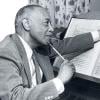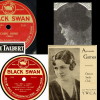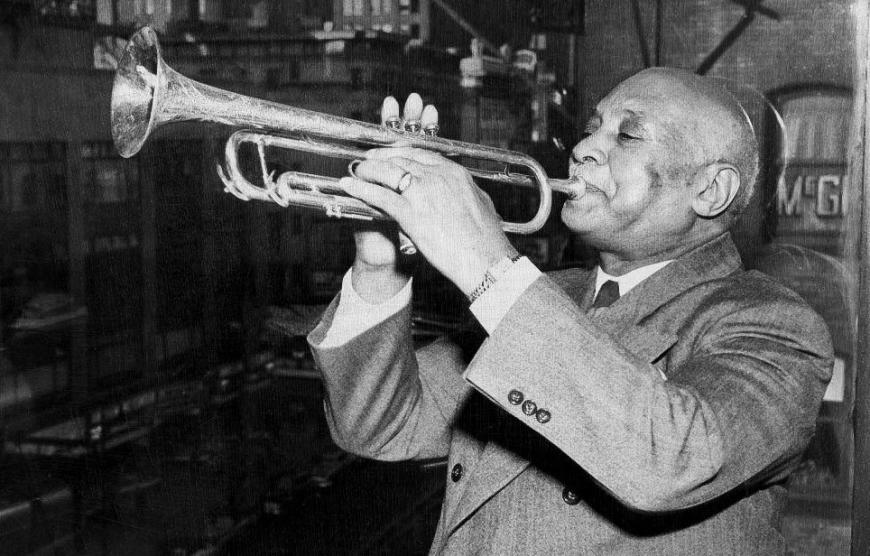
It’s often said that William Christopher (W.C.) Handy was the “father of the blues,” and in one sense he was. He was responsible for the notation onto paper of an oral tradition from Mississippi Delta sharecroppers that blended folkloric singing with guitar accompaniment, which soon became known, worldwide, as “the blues.” Handy’s work changed perceptions, beginning a century-long journey to uplift, understand, and celebrate the roots of African American music.
Handy’s commercialization of this form of Black singing announced the existence of an authentic Black culture beyond blackface minstrel shows, their “coon songs,” and their assumption that racial inferiority was natural and immutable. This is the story of how he got there.
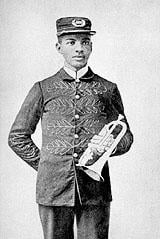
Handy’s blues revelation equals the critical work of the 1850s abolitionists William Francis Allen, Lucy McKim Garrison, and Charles Pickard Ware, who traveled to the South before and during the American Civil War to notate the oral singing traditions of slaves. The resulting epochal publication, Slave Songs of The United States (1867), documents a culture extant since the 1700s, a culture of songs that convey sorrow, joy, and determination.
The oral singing tradition of African slaves shows important intersections and through lines with the cultural mores of West African communal singing for celebrations, harvest, hunting, and burial.
Singing is also storytelling. These traditions reveal a collective cultural legacy that survived the Middle Passage of the transatlantic slave trade and the attempted suppression of this heritage in the New World African diaspora.
In their various ethnic and tribal permutations along the western coast of Africa (Benin [modern Nigeria], Dahomey, Togo, Ivory Coast, and Portuguese West Africa [Angola and Guinea]), these traditions further morphed in the diaspora. The transformation, reconfiguration, and integration of these differing yet overlapping traditions (music, storytelling, and spirituality) led to a synthesis that is at the heart of what made Handy’s sojourn in Havana, Cuba, so catalyzing.
These topics are the subject of more than a half century of expansive, detailed historical treatises and books. In this essay, I reference and have interviewed renowned Cuban musicologist Ned Sublette. I have also been guided by the reflections of Carlos Handy, grandson of W.C., who was born in Cuba and lived there in his early years.
The Background
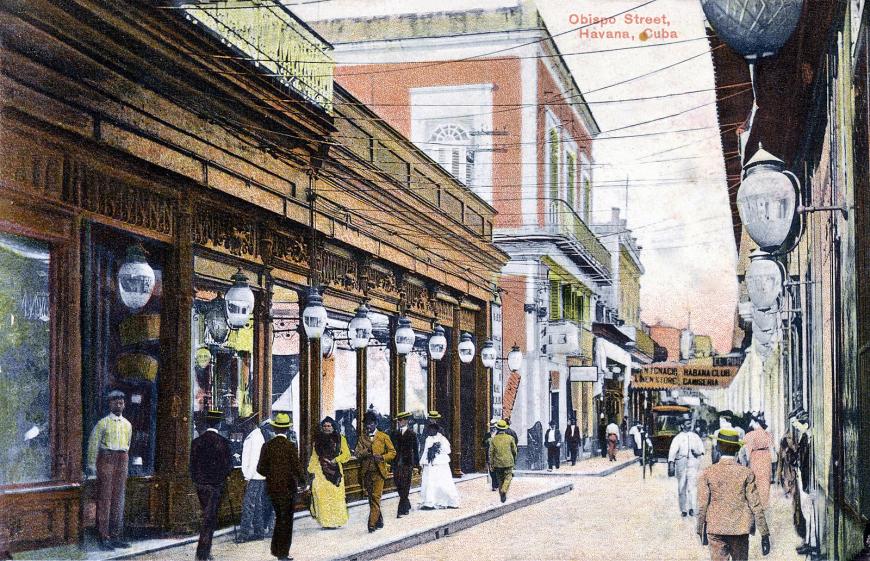
Carlos Handy, in written correspondence, gave a quick primer of his grandfather’s background:
W. C. Handy was a classically trained musician and composer but without formal conservatory training. In his formative period, he was uncertain of how seriously to pursue the raw African American musical traditions we now call ‘the blues.’ His instincts told him that the blues had musical value, but the prejudices of society (both white and Black) dissuaded him from pursuing it more seriously (until his visit to Havana in 1900 inspired him). In the United States, both white and educated/elite Black society considered the blues as a bastardized musical form.
In the U.S., there was no national awareness of what Black music was, other than spirituals and [on the popular side] ‘coon-songs’ and ragtime. However, both [of these] are heavily based on European traditions (in respect to the musical form —hymns in the Western European tradition and the marches of military bands). Unlike the U.S., Cuba was more advanced in 1900 in its musical evolution.”
Through the agency of an active transatlantic slave trade which lasted in Cuba until the early 1860s, unbroken lineages to African music and culture existed and thrived. This was due to the importance of cane sugar in the global economy. The global demand for sugar from Cuban plantations necessitated the constant importation of African slaves as a labor force.

Ned Sublette, the author of the most extraordinary book on this subject, titled Cuba and Its Music From the First Drums to the Mambo, shared these critical observations about the cultural impact of Cuban slavery:
“The transatlantic slave trade to Cuba was a machine, devouring and killing African laborers within 10 years due to the brutal labor requirements to meet the global demand for sugar. The importation of fresh Africans was essential to the global demand. Labor trumped the suppression of cultural mores.”
With the exception of the slave communities known as the Gullah and Geechee people, who live in isolated communities on islands off the coasts of South Carolina and Georgia and have actively preserved and celebrated their West African cultural lineage, Sublette continued, “by 1865, at the end of the American Civil War, most American slaves were generations removed from their African ancestral roots. In Cuba [by contrast], enslaved Africans were frequently new arrivals and fully in touch with their African cultural roots.”
The celebration of African identity, music, and culture in Cuba was continuous. With permutations from exposure to musical forms from the dominant elite upper class during the Spanish occupation of Cuba from 1521 to 1900, Sublette further noted that “the profession of music in Cuba in the 19th century was firmly in the hands of free people of color. Tracing back to antiquity, music and music-making was the job of slaves” This has been well documented in the cultures of Rome, Greece, and Egypt.
Handy’s Havana Trip
Carlos Handy asserted that “almost all of the Latin musical forms we now recognize (contradanzas, danzones, habanera/tango, rhumba) existed in Cuba by 1900.” Sublette took the observation further, saying, “Havana is the hemispheric capital of music since 1600.”
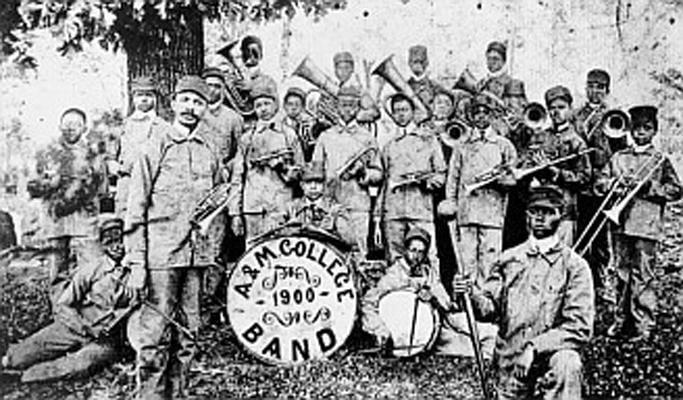
Sublette continued, explaining that when Handy arrived in Cuba, after the Spanish–American War, as part of a three-year continental tour as bandmaster of the popular show troupe known as Mahara’s Colored Minstrels, “he likely heard military bands playing habaneras and danzones as they [military bands] were everywhere during the Spanish occupation and this was the music of that era.”
At the end of the 19th century and into the 20th, military bands had become institutions of musical entertainment not only in Cuba but also in the United States, evidenced by the popularity of groups like John Philip Sousa’s, Charles A. Prince’s, and the Marine Military Band.
Because Handy was the bandmaster of Mahara’s Colored Minstrels, Sublette suggested, he was invited to listen to these bands at cafes and, in doing so, paid attention to what appeared to him as the revolutionary and daring racial integration of white Cuban, mulatto, and African Cuban musicians. He also experienced the music as entertainment that was devoid of derogatory coon songs and blackface skits and heard musical forms with clear African rhythmic roots. The latter was documented in his autobiography, in his exploration of “the small, shy bands that played behind closed shutters on dark, out-of-the-way streets where the passion flower bloomed in the heart of the night” — venues where the music was even more intoxicating. Handy reports hearing rhumba rhythm there almost 30 years before it became ubiquitous in America.
What Handy heard represented a “creolization” of Western European music by enslaved Africans. This was the music brought into 1900 cafes in performances by Cuban mulattos and white Cubans. It was a unique amalgam of 19th-century French contradanzas and cinquillos with Afro-Cuban rhythmic additions, which was well established before 1900.
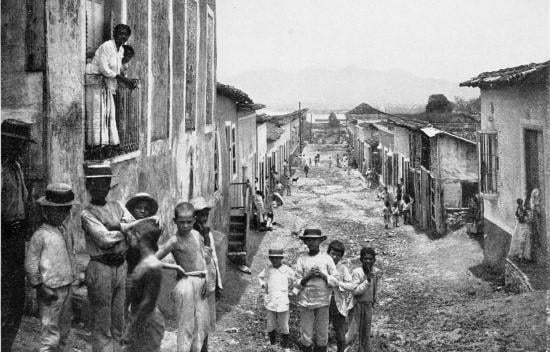
Cuban Music’s Arrival on the World Scene
Handy arrived in Cuba 46 years after French Creole composer Louis Moreau Gottschalk had visited in 1854, composing works for piano that were “odes to Havana,” such as Souvenir de la Havane (Grand Caprice de Concert), La Gallina (Danse Cubaine), and Ojos Criollas (Danse Cubaine).
The visit had repercussions and was influential. The “father of the Cuban contradanza,” Manuel Saumell Robredo (1818–1870), befriended Gottschalk and composed an ode to him, “Dice Que No.” Cuban composer Ignacio Cervantes (1847–1905) also wrote works that showcased, separately and collectively, new contradanzas and habaneras, and he took part in Gottschalk’s highly regarded master classes and also became his student, after which Gottschalk sent him to the Conservatoire de Paris.
Gottschalk’s visit and befriending of Saumell affected classical piano music and salon music played for social occasions, which would inspire the piano rags of Scott Joplin by the early 1900s.
In Europe, the habanera made a striking appearance in one of the most famous operas of all time, as Sublette explained. “Opera lovers know it from Bizet’s opera Carmen (1875). But its source comes from Havana. In Spanish, Havana is “Habana.” The Habanera is a musical form with a sultry 2/4 rhythmic figure in the bass, originally known as a Cuban contradanza, [which is] permeated with African influences.”
Colorism and African American Music
But in America, racial mixing in music had a very different aspect, except perhaps in New Orleans.
In 19th-century New Orleans, a culture that also had a history of racial mixing among the Spanish, the French, and African slaves, the habanera was known as the “Creole country dance.” In New Orleans, criollo was the Spanish word for a person of pure Spanish lineage. Of greater interest is the word “quadroon,” which referred to women of French slave-master lineage but also described an entire social class based on color and heritage and was applied to several generations of Black and French New Orleans women. In 2022, one refers to this lineage as “French Creole” or simply “Creole.”
Sublette made very clear that the racialized hierarchy of colorism in Cuba was different from the United States. Mulattos and mulattas, the offspring of sexual encounters with Spanish slave masters, had greater access to social mobility, and some could buy “white papers” (because in Cuba, an ounce of white blood made you white).
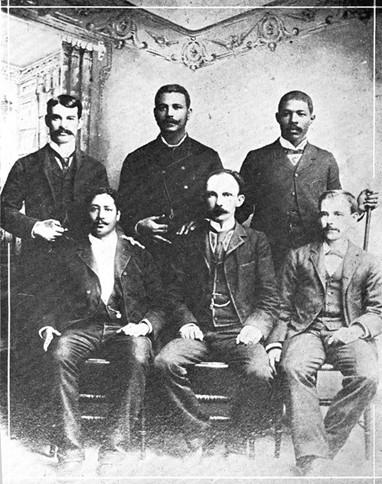
By contrast, in the antebellum and post-Civil War American South, one ounce of “Negro blood” was viewed as the kiss of death. American mulattos or mulattas, light-skin Black people with features closer to their European slave-master fathers, were stigmatized in white society as “the tragic mulatto,” the Black woman or man who was neither Black nor white, desperately failing to “pass for white” and thereby integrate without stigma into the larger American society.
Such were white-authored characters like Julie in Edna Ferber’s Show Boat and Fannie Hurst’s Peola Johnson, played by Fredi Washington in the 1934 movie Imitation of Life.
This stigmatization did not apply, however, to the African American community of 1900. The reverse was true: The leadership class of successful, educated Black people was invariably light-skinned or mulatto. The turn-of-the-century term “yaller” or “yellow,” and the early/mid-20th-century term “high yellow,” referred to this educated, socially upper-class, light-skinned Black person with more European features, whose lineage could be traced back to a slave-master father.
W.C. Handy’s music-publishing business partner, Harry Pace, had that lineage, and he was also a founding member of the Black intellectual and social elite, W.E.B. Dubois’ Talented Tenth. This organization was created at the dawn of the 20th century to lead “the colored race” out of its plight as a condemned and maligned post-Reconstruction class to be pitied like Sisyphus.
What this all meant was that, in Cuba, African musical influence was profound, whereas in America, even the Black middle and upper class shied away from it. Handy had to go to Havana to actually believe his ears.
Cuban Influence in 20th-Century Music
The habanera, contradanza, cinquillo, and bolero were Cuban music’s most important cultural ambassadors to the 19th century. They preceded the most famous, to come in the early and mid-20th century: tango, rhumba, and conga.
The famous rhumba that took the world by storm, “El Manisero” (The peanut vendor) by Moisés Simon, was first performed by Black Cuban singer Antonio Machín and recorded in 1927 or 1928 by Rita Montaner for Columbia Records. The hit version was made two years later by Don Azpiazú and his Havana Casino Orchestra.
Sublette commented that the Afro-Cuban musical form that Handy incorporated into his most famous composition, “The Saint Louis Blues” (1914), is the tango. The tango is an Afro-Cuban musical cell, “bailes des los negros,” which the late musicologist Robert Farris Thompson wrote about in his book Tango: The Art History of Love.
Sublette observed that tango has the same intersection of an African-influenced musical form and with dance/lovemaking as ragtime does. Both were originally deplored as “music of the brothels.”
In adding tango rhythms to his most famous blues, Handy was simultaneously enhancing the song’s musical interest and also creolizing Cuban and Black American music. In her well-known treatise Polyrhythmia in the Music of Cuba, composer Tania León traced the history of what I term “Africulturalism” in musical influences dating back to Spanish colonizers. From it emerges the idea of the “creolization” of European musical forms by the African population of Cuba, as well as of Haiti and other Caribbean islands during centuries of colonial occupation. The music goes hand in hand with creolized religious traditions from enslaved Africans in Cuba, Haiti, and Bahia, Brazil.
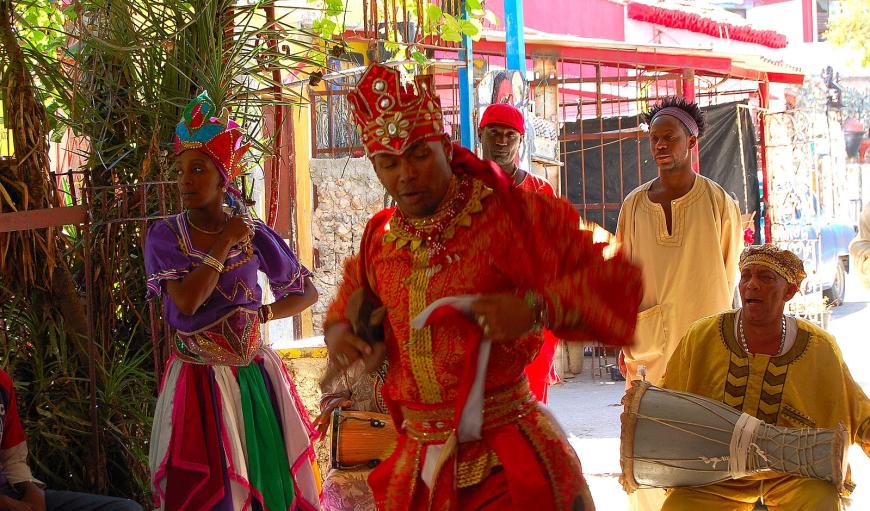
West African spirit worship of the Yoruba peoples of Benin venerating “Orishas” (spirit gods) morphed into the Afro-Cuban religious practice of Santería. At the foundation of Santería were Yoruba religious ceremonies, music, and dance expressions that were centuries old. The same can be said about the creolization of Catholicism with African spirit god worship in Haiti, which became Vodun or Voodoo. Central to all of these traditions was African drumming, singing, and dance. And much of that shows up in other music traditions throughout the 20th century.
The Return
Handy was impressed that Cuba seemed a considerably more progressive and socially equitable society compared to the racially restrictive Jim Crow South. In reality, the American occupation of Cuba after the Spanish–American War was anything but a social utopia.
The occupiers placed former Confederate Army Major Fitzhugh Lee, a nephew of General Robert E. Lee, in charge, and Lee imposed upon Cuban society a structural racism akin to the world of Jim Crow laws.
Sublette dryly commented that “Cuban whites hardly needed any encouragement to feel superior to Cuban blacks, but encouragement was what they received”
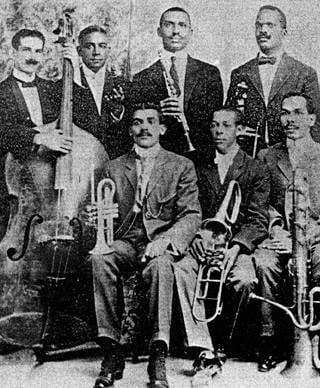
In Havana in 1900, Handy would have been viewed as a mulatto, a relatively light-skinned, free Black man and a musician, bandleader, and trumpet player who appeared to be like so many other Cuban mulatto musicians, who also were comparatively middle class in Cuban society.
As Sublette pointed out, the art of music-making in 1900 Havana was viewed as part-time entertainment after work, which differed from the official full-time status of being a musician in the 100-piece state-sponsored Havana Guards Band.
So Handy’s observations of a culturally integrated Cuban society were that of a foreigner intoxicated by the comparative freedom and openness of a culture of races that had dared to publicly mix through the celebration of music and dance.
Sponsored by the American government, Handy was a middle-class American who had not before experienced a restriction-free environment. In the rural South of Alabama and Mississippi, where he grew up, re-enslaved Black sharecroppers were subject to the racial terror of lynching by vigilante white mobs.
Aware of the American slave music legacy of spirituals and a lesser-known Mississippi backwater tradition of folkloric singing, Handy’s Havana experience inspired him to revisit the music that was present everywhere in the rural Deep South of the early 1900s.
In 1902, he traveled throughout Mississippi, listening to various styles of popular Black music. Oppressed politically, Black culture gave itself permission to be fully expressive musically, especially on cotton plantations in the Mississippi Delta. Influenced by his Havana experiences, Handy began the journey of transcribing the music he heard in his travels in Mississippi
Once, in 1903, while waiting for a train in Tutwiler, Handy overheard a Black man playing a steel guitar using a knife as a slide.As the story goes, circa 1905, while playing a dance in Cleveland, Mississippi, Handy was given a note asking for “our native music.” He played an old-time Southern melody but was asked if a local ensemble could play a few numbers. Handy assented, and three young men with well-worn instruments began to play. In his autobiography, Handy described the music they played:
“They struck up one of those over and over strains that seem to have no beginning and certainly no ending at all. The strumming attained a disturbing monotony, but on and on it went, a kind of stuff associated with cane rows and levee camps. Thump-thump-thump went their feet on the floor. It was not really annoying or unpleasant. Perhaps ‘haunting’ is the better word.”
The blues is a musical expression incorporating spirituals, work songs, field hollers, shouts, chants, and simple, rhymed narrative ballads. Foundational to the form is call and response and the use of bent or flattened blue notes, which have direct connections to West Africa’s cultural legacy. Handy’s Mississippi Delta field research led to the notation of this musical expression.
In researching the origins of the blues, I came upon a fascinating piece of history: The phrase “the blues” was written by Charlotte Forten in her diary on Dec. 14, 1862. She was a free-born Black woman from Pennsylvania who was working as a schoolteacher in South Carolina, instructing both slaves and freedmen, and she wrote that she “came home with the blues” because she felt lonesome and pitied herself. Before the end of the Civil War, she noted a number of songs, including “Poor Rosy,” that were popular among slaves. She wrote in her diary that such songs “can’t be sung without a full heart and a troubled spirit.”
It was a term that was already used to denote a feeling and a style when Handy published “The Memphis Blues” in 1912. It became his first commercial hit, two years later, when it was recorded.
Although considered the first commercial blues recording, Handy also described it as a “Southern rag,” which is clearly evident in the music. One of the players in Handy’s band, S.L. “Stack” Mangham, claimed that one of the tunes they heard Prince McCoy play in Cleveland, Mississippi, became “The Memphis Blues.” Whether or not that’s true, Handy definitely pioneered an “instrumental blues” for military and dance bands based on ideas he heard from vocal “country blues” singers. Handy’s song was long reported to have been originally written as a campaign tune for the mayor of Memphis, Edward Crump; however, several musicologists have more recently cast doubt on that.
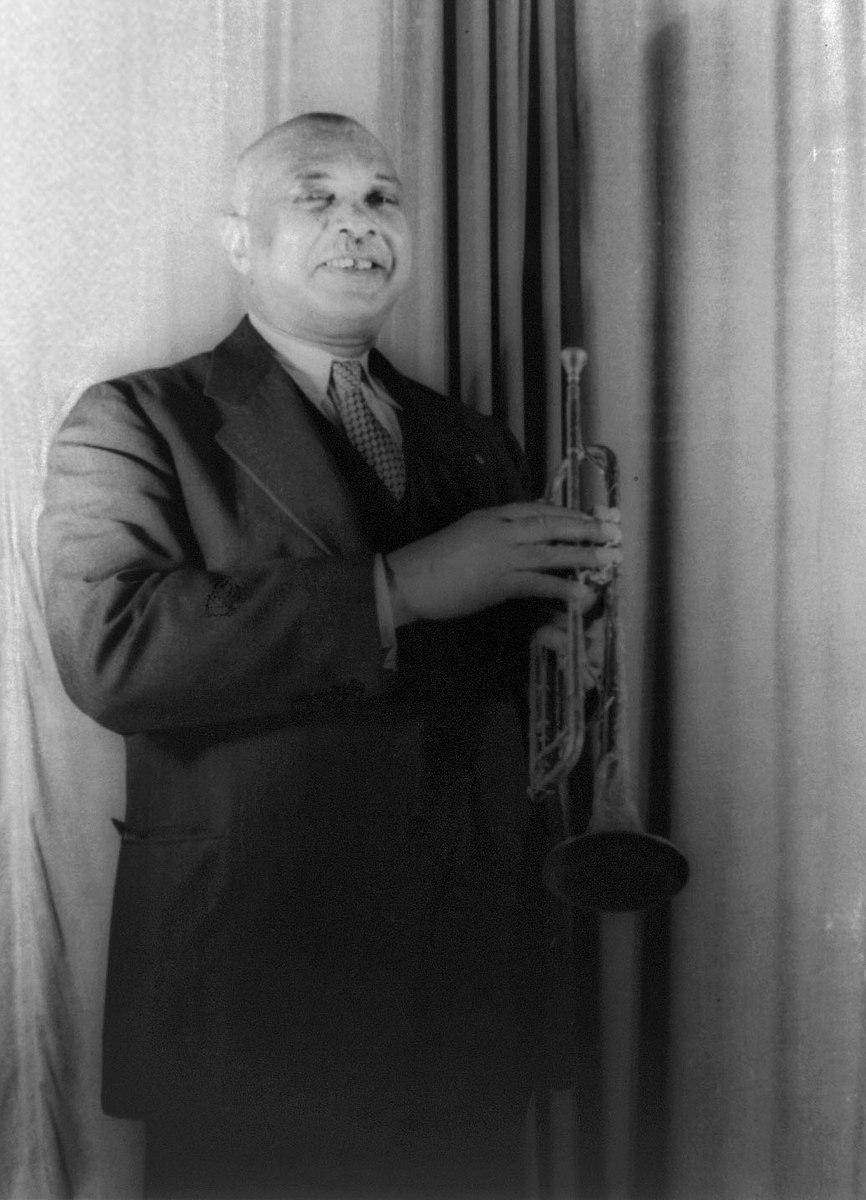
Handy’s visit to Havana was foundational as a homecoming that bridged two related worlds that were once one before the transatlantic slave trade. African musical culture in the Southern United States and African musical culture in Cuba and the Caribbean had always been related despite centuries of attempted suppression. The African musical and cultural heritage brought to New Orleans from Haiti and Saint-Domingue by the French in the early 1800s came to the historic Congo Square, where music and dance brought different cultural ideas into a oneness.
This same sense of oneness was shared in 1854 in Cuban music circles by Gottschalk, as Cuban music began to make its way in the world. Handy’s later exposure to Cuban music enabled him to be revolutionary in his work from 1902 to 1905, when he traced the connections of that African American music of slaves and sharecroppers to its diasporic foundation in the West African “motherland.”
Handy was also the first American composer to import and commercialize the Cuban tango by incorporating it prominently into one of jazz and blues’ landmark compositions, “The Saint Louis Blues.” This song revolutionized American music with its popularity, just as the Jazz Age was dawning in America.
Handy in Havana is like a movie screenplay, with the composer drawn into a rich and colorful world that solidified his musical perceptions and his sense of identity. Despite the low social status of the Mississippi Delta bluesmen, Handy recognized the power of their music and brought the genre into the American consciousness. He’s responsible for the cross-cultural recognition of the blues as an African American folkloric expression that not only changed the direction of American music in the 20th century but the direction of music history.


